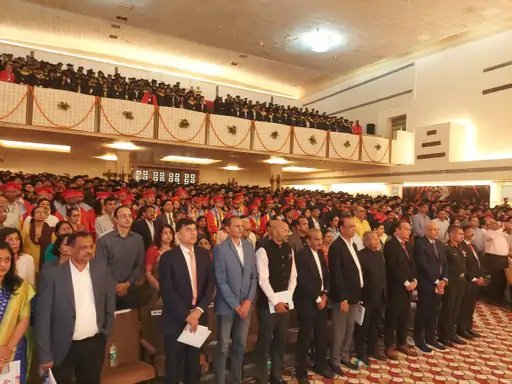Dr. S. Somanath, Chairman of the Indian Space Research Organization (ISRO), announced that ISRO is ambitiously aiming to send an Indian astronaut to the moon by 2040. Speaking at the convocation ceremony at the Birla Institute of Technology and Science (BITS) Pilani in Jhunjhunu on Sunday, he emphasized the need for a dedicated space station to serve as an intermediate platform for this mission, adding that advancements in microgravity research and specialized space missions are essential steps toward achieving this goal.
“We are still in a continuous learning phase, and our journey of exploration and discovery in space science is ongoing,” Dr. Somanath remarked, highlighting ISRO’s commitment to advancing India’s space capabilities.
Enormous Potential in Space Tourism for India
The ISRO Chief pointed to the promising field of space tourism, noting the significant role India could play in this emerging industry. “There are vast opportunities for India in space tourism, given our reputation for cost-effective engineering,” he said. Referring to private initiatives, Dr. Somanath cited Elon Musk’s plans to establish human colonies on Mars, envisioning a future where people could travel there with a single ticket.
He added, “India’s lunar and Mars missions have been among the world’s most affordable, which has brought ISRO global recognition. This cost-efficiency positions India uniquely in the potential space tourism market.”
India’s Vision for Space over the Next 5 to 60 Years
Outlining ISRO’s roadmap, Dr. Somanath shared that the Indian government has allocated ₹30,000 crore to support future space endeavors over the next 5 to 60 years. This funding marks a significant step forward in India’s space history, opening doors to substantial progress in research, exploration, and potential collaborations.
The Shifting Landscape of Space Exploration
Addressing students, Dr. Somanath spoke about the transformation within space science and technology, explaining that while reaching space was once extraordinarily challenging and costly, technological advancements have made it far more accessible. He reflected on the days when American space missions to the moon required substantial national investment, with nearly 20-30 percent of their assets dedicated to developing scientific capacity.
“Today, reaching space is easier than ever,” Dr. Somanath noted, adding that even universities and research institutions can now launch satellites. The costs of satellite launches have reduced dramatically, with around 20,000 active satellites currently in orbit. Many of these provide telecommunications and internet services with minimal latency, demonstrating the extensive reach of modern space technology.
As ISRO prepares to expand India’s role in space exploration, Dr. Somanath’s vision not only paves the way for a historic moon mission but also opens avenues for India to play a leading role in space tourism and low-cost satellite solutions.


